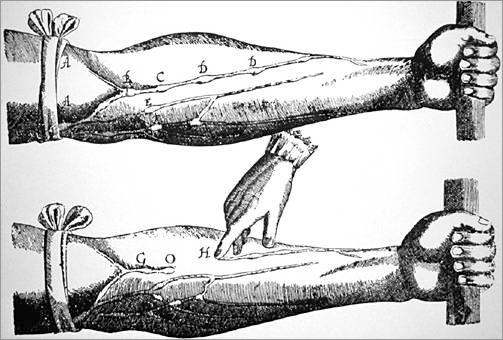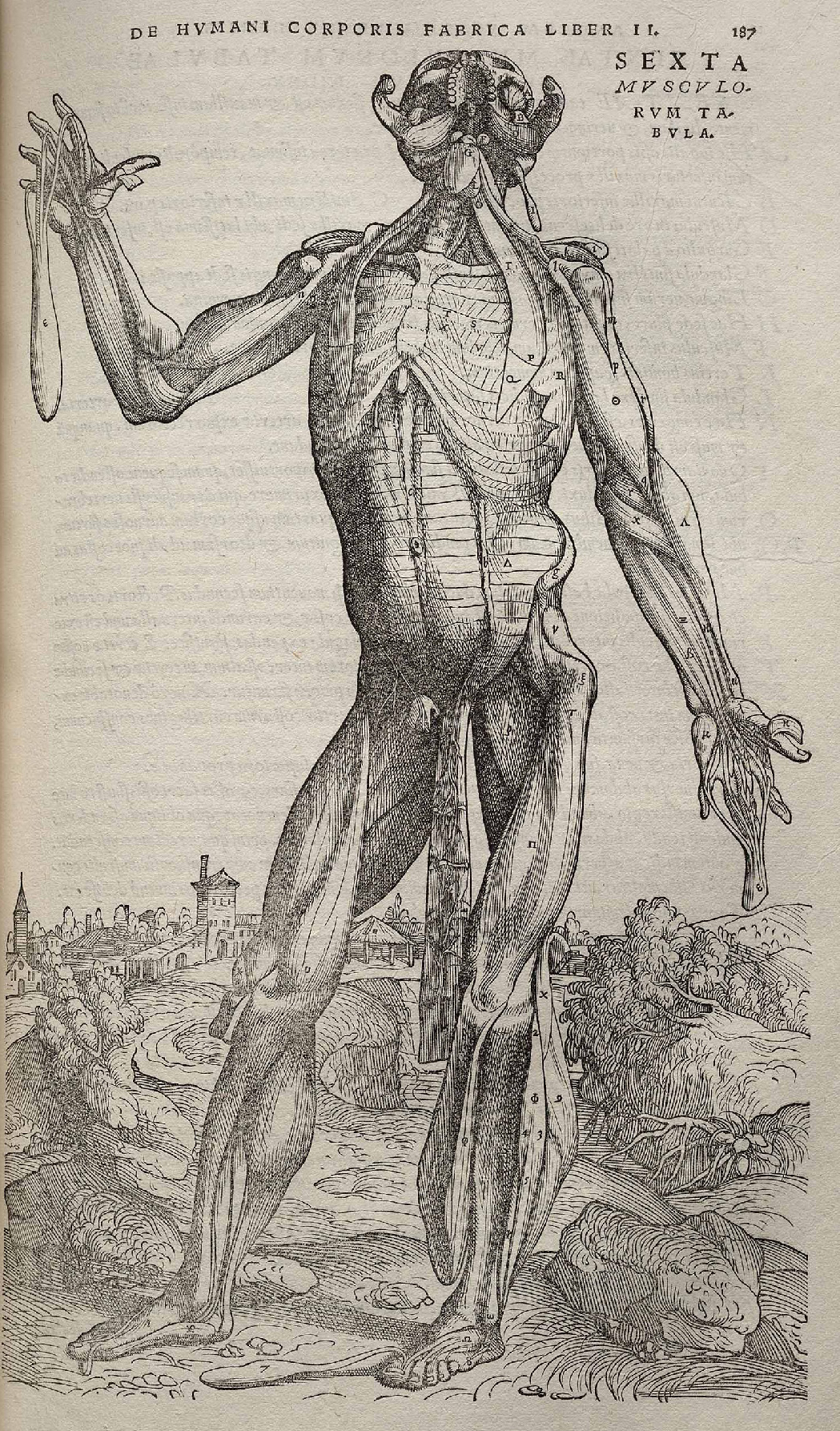Harvey and the circulation of the blood
Questions
What was Harvey's theory of the circulation of the blood and how did it differ from Galen's theory?
In what ways did Harvey's De motu cordis (1628) reflect his training as a physician and philosopher?
What, if anything, was new in Harvey's approach to the study of the human body?
Essential readings
Harvey, William. The Movement of the Heart and Blood in Animals: Anatomical Essays, in Kenneth Franklin trans., The Circulation of Blood and Other Writings (London, New York, 1963), chapters 8, 9, 10 (chapters 11, 12, 13 and 14 are also in this document if you want to read further)
Cunningham, Andrew. "William Harvey". In Roy Porter, ed., Man Masters Nature: 25 Centuries of Science (BBC Books, 1987).
French, Roger. William Harvey's Natural Philosophy (Cambridge University Press, 1994), chapter 5, pp. 94-98 (ie. the introduction to the chapter) and pp. 105-10 (ie. the description of chapters 8-13)
Further reading
Cunningham, Andrew. The Anatomical Renaissance: The Resurrection of the Anatomical Projects of the Ancients. Aldershot: Scolar/Ashgate, 1997.
Cunningham, Andrew. “The Pen and the Sword: Recovering the Disciplinary Identity of Physiology and Anatomy Before 1800: I: Old Physiology—the Pen.” Studies in History and Philosophy of Science Part C: Studies in History and Philosophy of Biological and Biomedical Sciences 33.4 (2002): 631–665.
Cunningham, Andrew. “The Pen and the Sword: Recovering the Disciplinary Identity of Physiology and Anatomy Before 1800: II: Old Anatomy—the Sword.” Studies in History and Philosophy of Science Part C: Studies in History and Philosophy of Biological and Biomedical Sciences 34.1 (2003): 51–76.
French, Roger. William Harvey's Natural Philosophy, chapters 1-4.
Kusukawa, Sachiko. “The Canon of the Human Body: Vesalius’s De Humani Corporis.” Picturing the Book of Nature: Image, Text, and Argument in Sixteenth-Century Human Anatomy and Medical Botany. University of Chicago Press, 2011. 198–227.
Lindberg, David C., "Greek and Roman Medicine," chapter 6 in The Beginnings of Western Science: The European Scientific Tradition in Philosophical, Religious, and Institutional Context (Chicago ; London: University of Chicago Press, 1992)
Porter, Roy. The Greatest Benefit to Mankind: A Medical History of Humanity. W.W. Norton, 1999.
Wear, A., R. K. French, and Iain M. Lonie, eds. The Medical Renaissance of the Sixteenth Century. Cambridge University Press, 1985.
Wear, Andrew. “Medicine in Early Modern Europe, 1500-1700.” The Western Medical Tradition: 800 BC to AD 1800. Ed. Lawrence I. Conrad. Cambridge: Cambridge University Press, 1995. 215–362.


Bottom: 'Muscle-man' from Vesalius, De humani corporis fabrica (1543)
